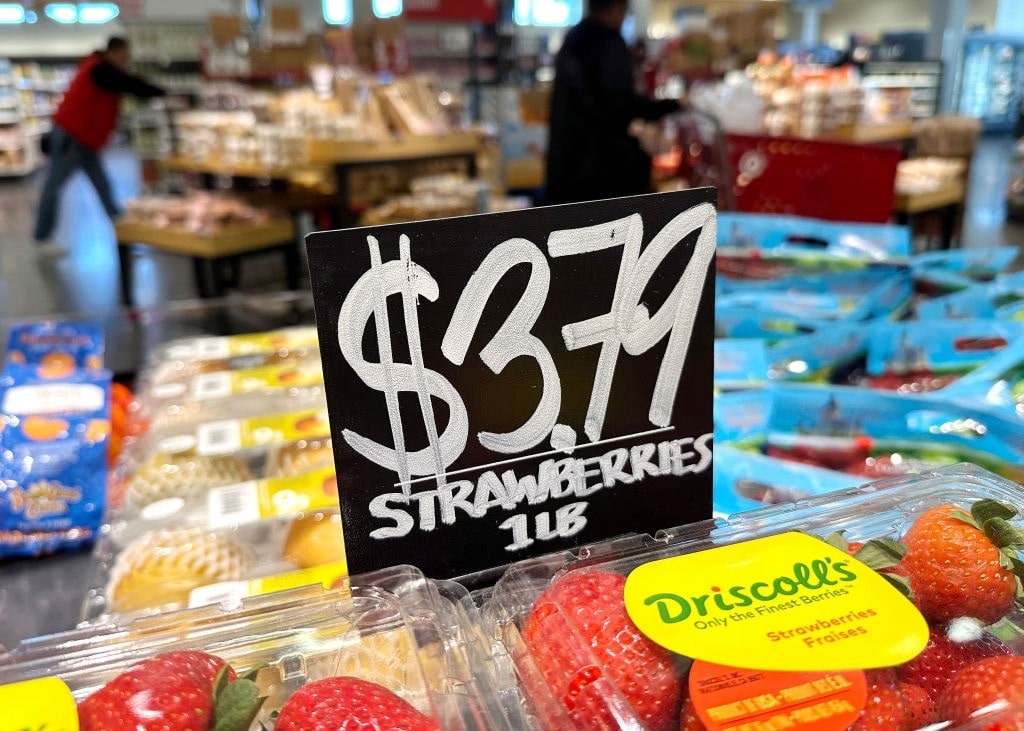White House apologists, including Keynesian economist Paul Krugman, insist that food inflation is overblown and that households exaggerate whenever they exit the front doors of Albertsons, Publix, or Walmart. While the growth rate has slowed over the last year, it is no secret that higher prices are squeezing family wallets. Recent US government data confirm that food is eating up more of Americans’ budgets at the highest rate in three decades.
Food Inflation Is Bad
According to the US Department of Agriculture (USDA), consumers dedicated more than 11% of their disposable income to eating, whether at the supermarket or a restaurant, in 2022. This represented the highest percentage since 1991. Additionally, by the end of 2023, individuals were paying approximately 25% more for the same basket of groceries as they were in 2019.
 The latest consumer price index (CPI) numbers show that grocery store prices rose 0.4%, and food costs away from home jumped 0.5%. Compared to the same time a year ago, both indexes are up 2.6% and 5.1%, respectively. So, this will continue to be an issue for US households in 2024.
The latest consumer price index (CPI) numbers show that grocery store prices rose 0.4%, and food costs away from home jumped 0.5%. Compared to the same time a year ago, both indexes are up 2.6% and 5.1%, respectively. So, this will continue to be an issue for US households in 2024.
Are companies taking advantage of food inflation? This is the administration’s current talking point. However, many components have contributed to bigger supermarket and fast-food checkout bills that go beyond so-called greedflation: higher labor costs (don’t forget those minimum-wage hikes!), growing input price pressures, and increasing energy and transportation prices. President Joe Biden has also yelled at the clouds about shrinkflation, although this has prevented food inflation from being even worse than it is now.
It is excellent that laundry appliances and televisions are experiencing deflation. But when the basics of life, be it shelter or groceries, are still unaffordable, it is unsurprising that many Americans are sour on the economy. That said, it is all in your head. As Krugman informed everyone recently, there is no inflation if you do not count food, shelter, gasoline, and used automobiles.
No Treasury Island for Old Men
Financial markets had anticipated sliding US Treasury yields amid the Federal Reserve cutting interest rates. However, the Treasury market remains robust because the Eccles Building continues to delay its initial pivot and signal that rates could be higher for longer. During the Feb. 26 trading session, yields were up across the board, with the benchmark ten-year above 4.3%. The two-year surged to 4.74%, while the 30-year topped 4.41%.
But while this can be condensed to traders concentrating on monetary policy, the Treasury auction performances have also played a significant role in the US government bond market. The Feb. 21 $16 billion 20-year bond auction was abysmal thanks to two notable results: a high yield of 4.595% and primary dealers – financial institutions that scoop up the remaining supply that domestic and foreign investors do not want – accounted for about 22% of purchases (the 12-month average has been around 12%). At the record $63 billion auction for two-year bills on Feb. 26, the high yield was 4.691%, and primary dealers picked up 15%.
In the end, traders are navigating a turbulent bond market that differs from years past: a deteriorating fiscal situation for the US government, higher-for-longer interest rates, and above-trend inflation. What is typically a hebetudinous affair has quickly transformed into a leading event for Wall Street. Many pay close attention to these auctions.
Another National Debt Milestone
If you have not been paying attention to the Treasury Department’s fun Debt to the Penny tool, then you are not living! According to the widely watched spreadsheet courtesy of the federal government, total public debt obligations exceeded $34.332 trillion, a fresh record for Uncle Sam. Since Jan. 2, the national debt has rocketed about $342 billion. At this rate, it will have risen by $1 trillion by the summer, marking $35 trillion.
Remember, it took the United States around 200 years to accumulate its first $1 trillion of red ink. Today, it takes a few months.




